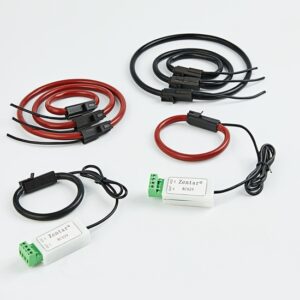Split core current transformers are often used in equipment and have excellent induction effects, which can improve the use efficiency of equipment, have a good effect in controlling current, and complete the conversion of upper and lower voltages.
How should we fix it in order to make it work smoothly and avoid vibration? Xiamen ZTC will take you to understand.
1.Fixing with set screws: The set screws are locked by 90° between the two set screws. In traditional fixing methods, the front end of the screw touches the shaft, which can cause damage to the shaft or make it difficult to disassemble
2.Fixing with clamping screws: Use the tightening force of the hexagonal socket head bolts to shorten the gap and clamp the open current transformer shaft. This method is easy to fix and disassemble, and will not cause damage to the shaft.
3.Key slot fixation: suitable for high torque transmission. To avoid axial sliding, it is usually used separately from set screw and clamping screw.
4.D hole fixation: Assuming that the motor shaft is D-shaped and the fixing screws cannot be fixed, the open-hole current transformer can be processed into a D hole corresponding to the size of the motor shaft and fixed with fixing screws, so there is no need to worry about slipping.
5.Shortened sleeve fixation of : Tighten the four positioning screws on the end face to compress the calculation sleeve, which is suitable for connecting and fixing some high-torque stepper motors and servo motors.
Generally, split core current transformer can be flexibly switched between high voltage and low voltage, so that the device can switch back and forth under different voltages. They are nice transformers in terms of protecting equipment and user safety. It is primarily fixed by these methods.
The energy monitoring is generally the cooperative application of the electric energy meter and the transformer. In the transformation project, the electric energy meter advocates the use of a rail-type electric energy meter, which is convenient for equipment, and the current transformer is preferably considered to use an open current transformer.
Open current transformers are mainly used in urban and rural power grid reconstruction projects in industry. The equipment is convenient, and there is no need to dismantle the busbar once, and it can also be operated with electricity, which does not affect the normal electricity consumption of customers, saves manpower, material resources and financial resources for user reconstruction projects, and improves efficiency. This series of current transformers can be used with relay protection, measurement and metering equipment.
Precautions:
- Before opening the current transformer device, it should be connected to the meter (or other measuring equipment) twice to ensure that the transformer is not open circuit twice;
- Place all open current transformers connected to the secondary line on the site and wait for the equipment;
- If the primary busbar on site is a cable, live equipment can be carried out; if the primary busbar is a copper busbar, the live operation will make it difficult for the operator to require a relatively high level of proficiency and good insulation protection methods;
- When installing the transformer, foreign objects such as impurities and dust should not fall into the cut surface of the iron core to avoid affecting the performance of the transformer.





